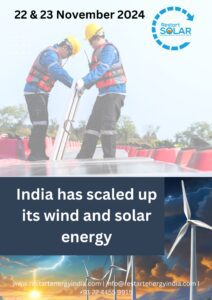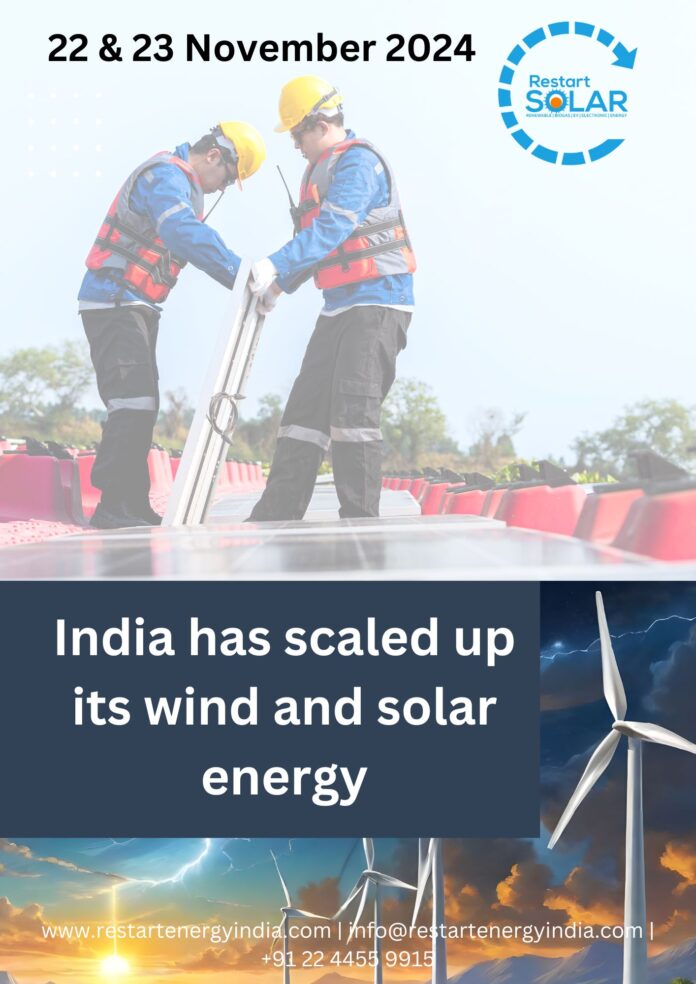 The nation’s lithium-ion battery storage sector, which can retain electricity from wind turbines or solar panels for use during periods of low sunlight or wind, accounts for just 0.1% of global battery storage systems.
The nation’s lithium-ion battery storage sector, which can retain electricity from wind turbines or solar panels for use during periods of low sunlight or wind, accounts for just 0.1% of global battery storage systems.
BENGALURU: At a Coca-Cola facility near Chennai in southern India, a massive battery now powers equipment day and night, replacing a diesel-spewing generator. It stands as one of the few sites in India powered by battery-stored electricity, a crucial element in accelerating India’s shift away from polluting fuels.
India’s lithium ion battery storage industry, capable of storing electricity generated by wind or solar sources for periods of low wind or sunlight, constitutes only 0.1% of the world’s battery storage systems. Nonetheless, battery storage is expanding rapidly, with roughly a third of India’s entire battery infrastructure coming online just this year. “Our demand is increasing exponentially,” stated Ayush Misra, CEO of Amperehour Energy, the company behind the Chennai factory’s battery installation. “It’s an exceptionally promising period to be a battery storage provider.”
Currently, India possesses approximately 100 megawatts of battery storage capacity, supplemented by another 3.3 gigawatts from hydropower. The Indian government estimates that the nation will require about 74 gigawatts of energy storage from batteries, hydropower, and nuclear energy by 2032. However, experts suggest this figure may need to double to adequately meet the country’s energy demands. Some customers remain cautious about adopting battery storage due to perceived higher costs compared to coal, which remains more widely used. Moreover, the battery supply chain is heavily dependent on China, exposing the sector to geopolitical risks.
Nevertheless, market sentiment anticipates increasing customer acceptance of batteries, with major Indian businesses announcing substantial investments in the industry. Earlier this year, Reliance Industries declared plans to construct a 5,000-acre factory in Jamnagar, Gujarat. Similarly, Goodenough Energy intends to invest $53 million by 2027 to establish a 20 million kilowatt-hour battery factory in Jammu and Kashmir.
Alexander Hogeveen Rutter, an independent energy analyst in Bengaluru, emphasizes that expanding storage capacity must parallel the scaling up of renewable energy sources. “Combining clean energy with adequate storage can serve as a viable alternative to coal, not just in the future but right now,” he asserted. He dispelled the notion that clean energy is more expensive than coal, noting that current renewable energy costs, when combined with storage, undercut new coal prices.
Global battery costs are plummeting faster than anticipated, prompting experts to speculate that energy storage systems could soon compete more effectively with both coal and other clean energy sources like hydropower and nuclear energy, which also manage their supply to meet demand.
“Battery storage now constitutes California’s largest resource for evening peak electricity demand, surpassing gas, nuclear, and coal,” he stated. This trend is being mirrored in the U.K., China, and even smaller nations such as Tonga. “There’s no reason why this couldn’t be replicated in India,” he added.
India faces a distinctive challenge due to its rapidly growing energy demands, driven by population growth and exacerbated by climate change-induced extreme heat, which intensifies air conditioner use. According to the International Energy Agency, India’s electricity demand rose by 7% last year and is projected to increase by at least 6% annually over the next three years.
“India must quadruple its deployment of renewable energy just to keep pace with demand growth,” emphasized Hogeveen Rutter.
Ankit Mittal, co-founder of Sheru, a software company specializing in energy storage and management solutions, proposed enhancing the flexibility of battery storage sites to expedite industry expansion.
Mittal advocated for greater integration of battery storage sites into the national energy grid, enabling them to supply electricity to regions with the greatest energy deficits. Currently, battery storage sites in India primarily cater to local needs.
To further bolster the battery sector’s growth, the Indian government introduced a $452 million initiative last year aimed at supporting an additional four gigawatts of battery storage by 2031. However, subsidies for coal plants continue to present a cheaper option for certain utility companies, creating an uneven playing field.
Future government policies could potentially rectify this situation. Industry leaders are eagerly awaiting the new national budget announcement scheduled for later this month, hoping for incentives that support clean energy storage.
Akshay Singhal, co-founder of Log 9 Materials, a Bengaluru-based battery technology startup, believes enhanced government backing could steer India toward meeting escalating energy demands sustainably.
“A single significant policy change could kickstart the entire ecosystem,” he concluded.
www.restartenergyindia.com



